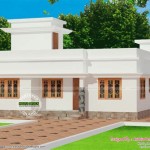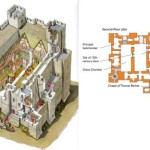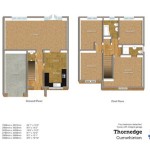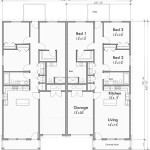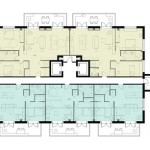Open Floor Plan Kitchen Designs
Open floor plan kitchens have become a highly sought-after feature in modern homes. They offer a sense of spaciousness, facilitate interaction, and create a brighter, more welcoming environment. This design approach eliminates the walls that traditionally separate the kitchen from adjacent living spaces, such as the dining room and living room. This article will explore the benefits, design considerations, and popular layout options for open floor plan kitchens.
Benefits of Open Floor Plan Kitchens
The popularity of open floor plans stems from several key advantages. Removing walls creates a larger, more fluid space, maximizing natural light and air circulation. This is particularly beneficial in smaller homes or apartments where open floor plans can make the space feel significantly larger. The open design promotes a sense of togetherness, allowing individuals to cook and socialize simultaneously. Families can interact while meals are being prepared, and hosts can easily engage with guests during parties. Furthermore, open plan kitchens often increase the value of a home, appealing to potential buyers who appreciate modern design and flexible living spaces.
Design Considerations for Open Floor Plan Kitchens
While open floor plan kitchens offer many benefits, careful planning is crucial for a successful design. One primary consideration is maintaining a cohesive aesthetic across the combined spaces. The kitchen's design elements, including cabinetry, countertops, and flooring, should complement the adjoining living and dining areas to create a harmonious flow. Consider using consistent color palettes, materials, and design styles to unify the different zones. Another important factor is managing noise levels. The open design means sounds from the kitchen, such as appliances and conversations, can travel easily into other areas. Selecting quieter appliances and incorporating sound-absorbing materials, like rugs and curtains, can mitigate noise transfer.
Storage and organization are also critical in open floor plan kitchens. Without walls to conceal clutter, maintaining a tidy and organized space is essential. Incorporating ample storage solutions, such as pantry cabinets, kitchen islands with drawers, and open shelving, will help keep the kitchen looking its best. Furthermore, defining zones within the open space can be helpful. While walls are absent, strategically placed furniture, rugs, and lighting fixtures can help delineate the kitchen, dining, and living areas, creating a sense of structure and purpose within the open plan.
Popular Open Floor Plan Kitchen Layouts
Several popular layouts are commonly employed in open floor plan kitchens. The L-shaped kitchen layout is a versatile option that fits well in various open plan configurations. It utilizes two perpendicular walls for cabinets and countertops, creating a defined work triangle and leaving space for an island or dining table. The U-shaped layout, with cabinets and countertops on three walls, is another efficient design. This layout maximizes counter space and storage while creating a natural separation between the kitchen and other areas. The galley kitchen, featuring two parallel runs of cabinets and countertops, can be adapted for open plan designs by removing one wall and incorporating an island or peninsula to define the space.
Lighting and Ventilation in Open Floor Plan Kitchens
Proper lighting and ventilation are crucial in open floor plan kitchens. Since the kitchen is integrated with other living areas, a multi-layered lighting approach is recommended. Task lighting, such as under-cabinet lights and pendant lights over the island, provides focused illumination for food preparation. Ambient lighting, like recessed lighting and strategically placed floor lamps, creates a warm and inviting atmosphere. Accent lighting can highlight architectural features or decorative elements. Effective ventilation is equally important. A powerful range hood is essential for removing cooking odors and grease from the open space. Consider installing a vented range hood that exhausts air outside for optimal performance.
Flooring and Material Choices
Flooring in an open floor plan kitchen should be durable, easy to clean, and visually appealing. Hardwood, tile, and laminate are popular choices due to their resilience and aesthetic versatility. Consider using the same flooring material throughout the open plan to create a sense of continuity. However, using area rugs can define different zones and add warmth and texture. Cabinetry and countertop materials should complement the overall design aesthetic. Popular choices include quartz, granite, and marble for countertops, and wood, laminate, and painted finishes for cabinets.
Choosing the right appliances is also important. Opt for appliances that are both functional and aesthetically pleasing. Consider panel-ready appliances to seamlessly integrate them with the cabinetry for a cohesive look. Lastly, incorporating a kitchen island can significantly enhance the functionality and design of an open floor plan kitchen. Islands provide additional workspace, storage, seating, and can serve as a focal point for the entire space.

30 Open Concept Kitchens Pictures Of Designs Layouts Kitchen Living Room Layout

What You Need In Your Open Kitchen Ellecor Interior Design

Amazing Kitchens With Open Floor Plans

Open Floor Plan Kitchen Design Delmarva Center

The Benefits Of An Open Concept Kitchen Design About Kitchens More

16 Amazing Open Plan Kitchens Ideas For Your Home Sheri Winter Parker North Fork Real Estate

Open Concept Kitchen Layout Pros And Cons To Consider

29 Open Kitchen Designs With Living Room Concept Remodel Small Modern Plan

Benefits Of An Open Kitchen Concept Designs

Open Concept Kitchen And Living Room 55 Designs Ideas Interiorzine

